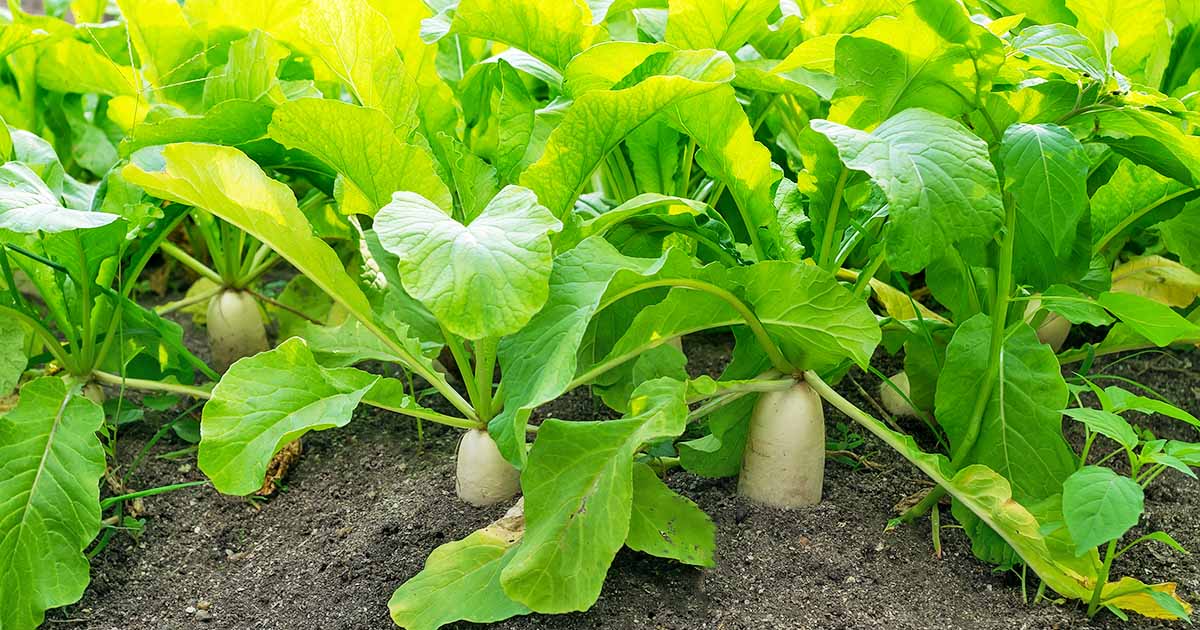
Daikon Radish
Raphanus sativus var. longipinnatus
Basic Information
🌿 Family: Brassicaceae🗺️ Zone: 2-11
Other Names:
- White Radish
- Japanese Radish
- Chinese Radish
🌡️ Ideal Temperature : 45°F – 75°F
🔥 Heat Tolerance: Up to 95°F
❄️ Cold Tolerance: Down to 20°F
🌱 Type: Annual
Layers
- Root
Functions
- Edible
- Medicinal
- Dynamic Accumulator
- Erosion Control
- Animal Fodder
- Pest Management
Pests
No pests associated with this plant.
Description
Daikon Radish (Raphanus sativus var. longipinnatus) is a fast-growing, cool-season root vegetable known for its long, white, cylindrical taproot that can grow up to 60 cm (24 inches) deep. The plant has lush green leaves and small white or yellow flowers that bloom if left to bolt.
Daikon Radish thrives in loose, well-drained soil and is often used as a cover crop to break up compacted soil, prevent erosion, and scavenge nutrients. It is widely grown in temperate and subtropical climates and can be used for culinary, medicinal, and soil improvement purposes.
🌞💧 Sun and Water Requirements:
- Prefers full sun but tolerates partial shade.
- Requires loose, well-drained soil to allow root development.
- Moderate water needs; avoid waterlogging to prevent rot.
✂️🫘 Methods to Propagate:
- Seeds: Direct sow in early spring or late summer for fall crops.
- Succession Planting: Sow every 2–3 weeks for a continuous harvest.
- Self-seeding: Can reseed if left to flower and set seed.
🧑🌾👩🌾 When to Harvest:
- Harvest 50–70 days after planting when roots reach 20–60 cm (8–24 inches) in length.
- Pull roots before they become too fibrous or woody.
- Leaves can be harvested throughout the growing season for salads or animal fodder.
Purpose
Daikon Radish serves multiple functions in a permaculture system:
- Edible: Roots are used in salads, stir-fries, pickles, and soups.
- Medicinal: Traditionally used for digestion, detoxification, and respiratory health.
- Dynamic Accumulator: Scavenges deep nutrients such as nitrogen and potassium, enriching the soil.
- Erosion Control: Deep taproots stabilize the soil and reduce compaction.
- Animal Fodder: Leaves and roots provide nutritious forage for livestock.
- Pest Management: Suppresses weeds and attracts beneficial predatory insects.